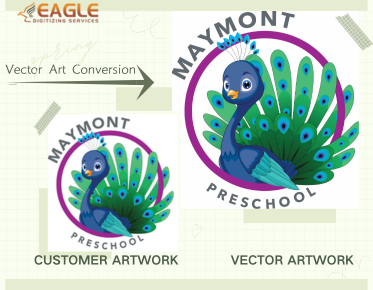Discover: Is Pixel Art a Vector or Something More?
In the vibrant landscape of digital art, the distinction between pixel art and vector graphics often sparks lively discussions among artists, designers, and enthusiasts alike. Both styles carry their unique charm and purpose, yet they operate on fundamentally different principles. Pixel art, with its nostalgic roots and grid-like precision, stands in stark contrast to the fluidity and scalability of vector graphics. As the digital world continues to evolve, the conversation surrounding these two artistic forms becomes increasingly relevant. Understanding their differences is crucial for artists and designers looking to make informed decisions about their creative projects. For the excellent online raster to vector services, have no qualms about getting in touch with us.
Pixel Art vs. Vector Art: Key Differences Explained
Resolution Matters: Why Pixel Art Is Resolution-Dependent
One of the most significant distinctions between pixel art and vector graphics lies in their resolution. Pixel art is inherently resolution-dependent; it consists of a fixed grid of pixels. When you scale up a pixel art image, the individual pixels become larger and more apparent, leading to a blocky and often unattractive appearance. Conversely, vector graphics are composed of mathematical equations, allowing them to be resized infinitely without losing quality. This fundamental difference shapes how each art form is utilized and perceived in various contexts.
File Formats: Common Formats for Pixel and Vector Art
When it comes to file formats, pixel art, and vector graphics cater to different needs. Pixel art is typically saved in raster formats such as PNG, GIF, or BMP, which store pixel information directly. These formats excel in preserving detail and color but come with the limitations of resolution. In contrast, vector graphics are saved in formats like SVG, EPS, or AI, which maintain scalability and editability by storing information as paths and shapes. Understanding these formats is crucial for artists and designers when choosing the right medium for their projects.
Aesthetic Qualities: How Style Influences Perception
The aesthetic qualities of pixel art and vector graphics contribute significantly to how they are perceived by audiences. Pixel art evokes a sense of nostalgia and retro charm, often associated with the early days of gaming. Its deliberate limitations can create a unique beauty, drawing viewers into a world of imagination. Vector graphics, on the other hand, exude modernity and precision. Their smooth lines and scalable nature make them ideal for sleek designs and professional applications. These contrasting aesthetics serve different purposes, catering to diverse tastes and contexts in the world of design.
The Misconception: Is Pixel Art Vector?
Understanding the Pixel Grid: Why It’s Not Vector
The misconception that pixel art could be considered a vector often stems from a misunderstanding of its fundamental nature. Pixel art is created on a grid where each pixel contributes to the overall image. This fixed grid structure is in direct opposition to the fluidity of vector graphics, which rely on points, lines, and curves. The rigidity of pixels means that any alteration results in a direct change to the image itself, reinforcing the notion that pixel art is not a vector.
The Nature of Pixels: Fixed vs. Fluid Graphics
The essence of pixels lies in their fixed nature. Each pixel in a pixel art piece is a solid square, which cannot be adjusted independently of its neighbors without altering the entire composition. This stands in stark contrast to the fluid graphics of vector art, where shapes can be manipulated effortlessly. The flexibility of vectors allows for dynamic compositions, while pixel art’s fixed attributes promote a more meticulous approach to design. Recognizing these distinctions clarifies the ongoing debate about whether pixel art can be classified as a vector.
Clarifying the Terms: Pixel vs. Vector in Art Discussions
In discussions about digital art, clarity in terminology is essential. Referring to pixel art as a vector can lead to confusion and misconceptions. It’s important to understand that these terms represent two distinct philosophies of creation. Pixel art celebrates the limitations and structure of pixels, while vector graphics emphasize scalability and precision. By maintaining clarity in these terms, artists and designers can engage in more meaningful conversations about their craft.
How Pixel Art is Created: Tools and Techniques
Popular Software for Pixel Art Creation
Creating pixel art requires specialized software that caters to the unique needs of this art form. Some of the most popular tools include Aseprite, Pyxel Edit, and GraphicsGale, each offering distinct features tailored for pixel artists. These programs typically provide grid overlays, customizable color palettes, and animation capabilities, enabling artists to bring their creations to life. Additionally, some traditional image editing software, like Photoshop, can also be adapted for pixel art, though they may lack the streamlined features of dedicated pixel art programs.
Techniques for Crafting Pixel Art: A Step-by-Step Guide
Crafting pixel art involves a series of deliberate steps that prioritize precision and creativity. Start by sketching a basic outline of your design, utilizing a low-resolution grid to define the structure. Next, select a limited color palette to guide your choices; this will enhance the cohesion of your artwork. As you begin placing pixels, focus on shading and detail, employing techniques like dithering to create depth. Finally, refine your piece by adjusting individual pixels and ensuring a balanced composition. This meticulous process is what gives pixel art its charm and character.
The Importance of Color Palettes: Making Pixel Art Shine
Color palettes are fundamental in pixel art, as they dictate the mood and vibrancy of the piece. Artists often choose limited palettes to create cohesion and consistency throughout their work. Classic pixel art palettes, like those from the NES or Game Boy, offer a nostalgic touch, while modern artists may opt for custom palettes that suit their unique style. The careful selection and application of colors can elevate a pixel art piece, enhancing its visual appeal and storytelling potential.
The Advantages of Pixel Art: Why It’s Still Popular
Nostalgia Factor: The Retro Appeal of Pixel Art
One of the primary reasons pixel art continues to thrive is its nostalgic charm. Many people associate pixel art with their childhood experiences in gaming, sparking fond memories and emotional connections. This retro appeal resonates not only with those who grew up during the golden age of video games but also with a new generation of gamers discovering indie titles that embrace this aesthetic. As a result, pixel art has become a beloved style that transcends age and cultural boundaries.
Accessibility: Easy to Learn, Hard to Master
Pixel art is often viewed as an accessible entry point for aspiring artists. The straightforward nature of creating images on a grid allows newcomers to grasp the basics quickly. However, while the fundamentals may be easy to learn, mastering the intricacies of pixel art requires time, patience, and practice. This paradox of accessibility attracts many budding artists, as they can experiment and grow their skills over time, making it a popular choice for creative expression.
Community and Culture: The Pixel Art Scene
The pixel art community is a vibrant and welcoming space that fosters creativity and collaboration. Numerous online forums, social media groups, and platforms like DeviantArt and ArtStation serve as hubs for artists to share their work, exchange tips, and participate in challenges. This sense of camaraderie not only inspires individual growth but also fuels the overall popularity of pixel art. The culture surrounding pixel art is a testament to its enduring relevance and appeal in the digital landscape.
When to Use Pixel Art vs. Vector Graphics
Choosing the Right Style for Your Project
Deciding between pixel art and vector graphics hinges on the project's goals and intended audience. Pixel art shines in projects that seek to evoke nostalgia or a retro aesthetic, making it a perfect fit for indie games or playful illustrations. In contrast, vector graphics are ideal for projects requiring scalability and precision, such as logos, branding materials, and infographics. Assessing the project's context and desired impact will guide the choice of style, ensuring the final product resonates with its intended audience.
Case Studies: Successful Uses of Pixel and Vector Art
Examining case studies of successful projects can illuminate the strengths of both pixel art and vector graphics. Games like "Celeste" and "Undertale" showcase the charm and emotional resonance of pixel art, drawing players into immersive worlds through simple yet effective visuals. On the other hand, companies like Airbnb and Spotify leverage vector graphics for their branding, creating sleek and modern visuals that stand out in a competitive marketplace. These examples highlight how both styles can be effectively utilized, depending on the project's vision and objectives.
Blending Styles: Combining Pixel and Vector in Design
The artistic landscape is not limited to a single style; blending pixel art and vector graphics can yield stunning results. Many contemporary artists experiment with hybrid designs, incorporating pixel elements into vector compositions or vice versa. This approach allows for unique visual narratives, combining the charm of pixel art with the precision of vectors. Embracing this versatility can lead to innovative designs that captivate audiences and break the mold of traditional art forms.
The Future of Pixel Art: Trends and Innovations
Emerging Tools and Technologies: The Evolution of Pixel Art
As technology continues to advance, new tools and innovations are emerging to support pixel artists. Software developers are creating more intuitive platforms, complete with features that streamline the pixel art creation process. From AI-assisted tools that help refine designs to online collaboration platforms that enable real-time feedback, the future of pixel art looks promising. These advancements will undoubtedly influence how artists create and share their work, ensuring that pixel art remains relevant in the ever-changing digital landscape.
Pixel Art in Modern Gaming: Staying Relevant
Pixel art is experiencing a renaissance in modern gaming, with many indie developers opting for this style to differentiate their titles. The rise of platforms like Steam and the Nintendo Switch has created opportunities for pixel art games to thrive, allowing developers to tap into a community eager for unique, nostalgic experiences. As gaming technology evolves, pixel art continues to adapt, proving that it can coexist with cutting-edge graphics while maintaining its beloved charm.
Community Contributions: The Role of Artists and Developers
The pixel art community plays a crucial role in shaping the future of this art form. Artists, developers, and enthusiasts collaborate to create resources, share techniques, and promote pixel art through events like Game Jams and art contests. This sense of community fosters innovation, encouraging artists to push boundaries and explore new possibilities within the pixel art medium. The collective efforts of passionate individuals ensure that pixel art remains a dynamic and evolving form of expression. If this post has aroused your curiosity about vector art conversation services and you hope to gain more knowledge, reach out to us without hesitation.
Pixel art and vector graphics are two distinct yet complementary art forms that each offer unique qualities and advantages. Understanding their differences, applications, and creative potential empowers artists and designers to make informed decisions about their work. While pixel art evokes nostalgia and charm, vector graphics provide precision and scalability. Both styles have their rightful place in the world of digital art, and appreciating their unique attributes can inspire more innovative and diverse creations.


